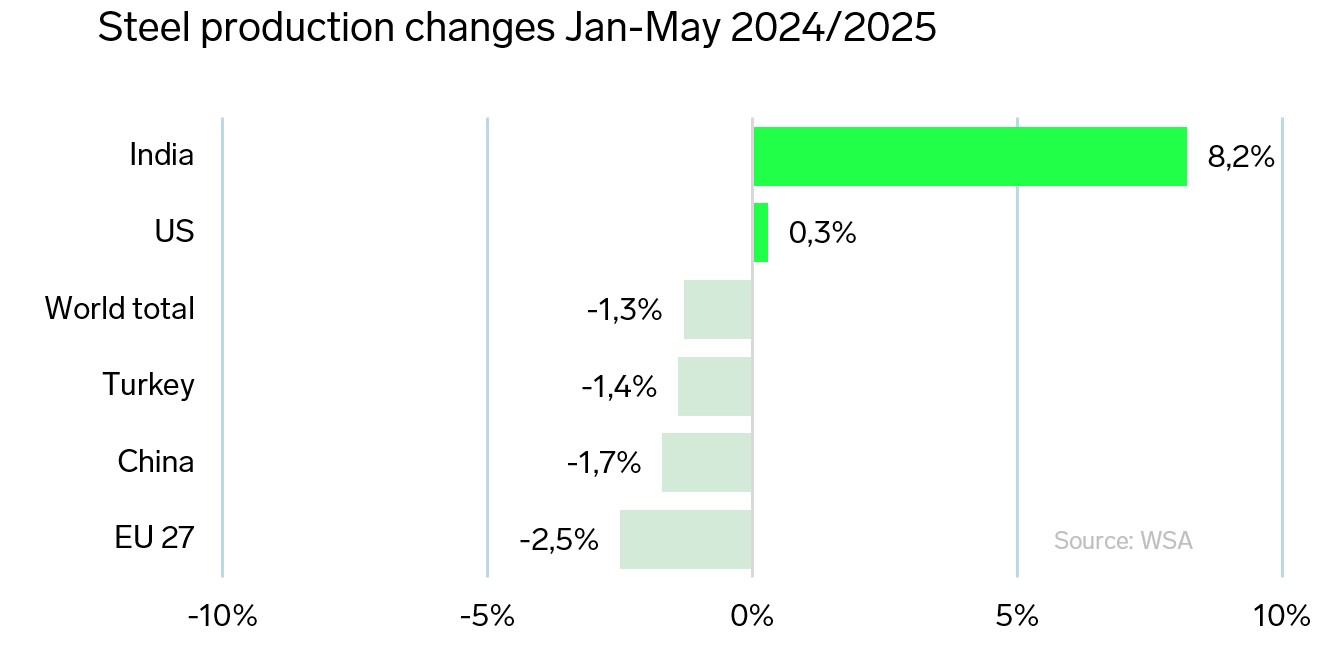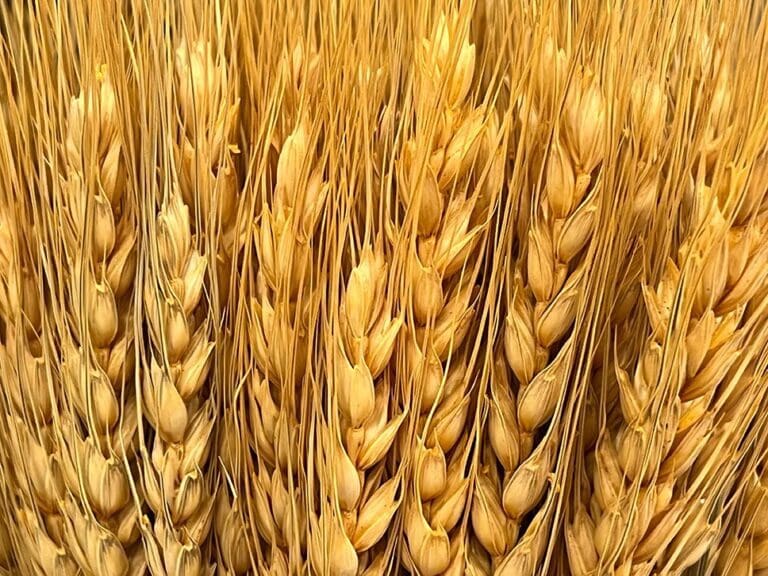Global steel production in May amounted to 158.8 million tonnes, down 3.8% year on year (y-o-y). The largest decline was seen in China, where steel production fell by 6.9% y-o-y to 86.6 million tonnes, caused by a sharp decline in domestic demand amid the crisis in real estate, which traditionally consumes over 40% of China’s domestic steel demand. Moreover, May and June are usually the peak months for steel production in China during the year.

European steel production fell by 3.1% y-o-y to 11.4 million tonnes, due to low demand from the construction and automotive industries. North America saw growth of 3.4% y-o-y to 9.5 million tonnes thanks to sustained demand for steel in the US. US steel production in May reached 7.0 million tonnes, up 1.7% y-o-y. The growth is local in nature and is largely supported by tariff protection, which protects the domestic market from competition from cheap imports.
It is clear that the rate of decline accelerated in May, as the total global decline in steel production for the first five months of 2025 was 1.3% y-o-y. China reduced its output by 1.7% y-o-y to 431.6 million tonnes in the first five months, reflecting a prolonged decline in domestic demand due to a sustained decline in steel consumption for construction. In China, there are no signs of recovery in the construction industry yet. Real estate investment for the first five months of 2025 fell by 11% y-o-y, while construction investment fell by 13% y-o-y. A measure tracking the floor space of projects for which new construction has started continues to show a high rate of decline at 23% y-o-y. Despite the economic stimulus announced in October 2024, there is still no positive effect on the construction market.
China produces over 50% of the world’s steel, so any decline in domestic demand automatically creates an oversupply that is redistributed to the external market. This intensifies competition, lowers global prices and puts pressure on the profitability of producers in other regions. At the same time, the reduction in production in China leads to a decrease in demand for raw materials, including iron ore and coking coal, which affects global steel prices and reduces the raw material cost of steel production.
Image source: Getty
Written by Artem Segen



